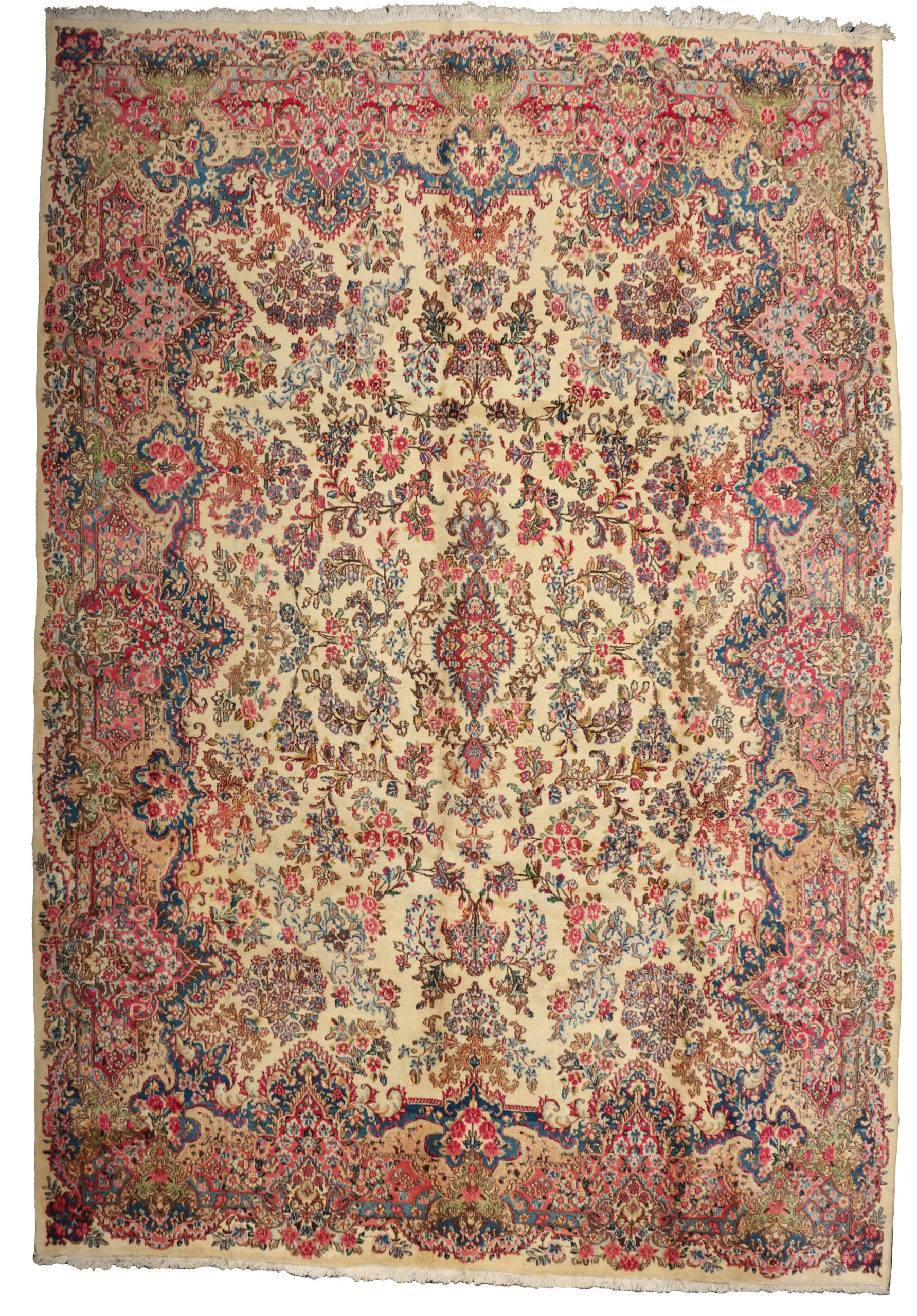Description
The ancient city of Kerman, situated in southeast of Iran is famous for producing high quality large carpets and is a bustling center of trade with its many seaports. Kerman rugs have a rich history, and a link to a very famous explorer. The first Kerman rugs were constructed over a thousand years ago. Kerman rugs were made popular all around the world when Marco Polo noticed their incredible craftsmanship and distinct designs.
Kerman rugs often boast a range of medallions and floral designs. The tree of life structure is also popular motif. Like Tabriz, rugs from Kerman can come in many designs. The quality of these rugs is of a high standard with many knot counts being between 180-400 knots per square inch. The wool used is exceptionally well textured and is based on a cotton foundation. Colors vary, but in general light shades of red and blue are used.
From a design standpoint, Kerman rugs feature excessively detailed and elaborate motifs which cover the entire field of the rug. This requires an enormous amount of work and effort. Another distinct theme is the design known as Sabzikar—floral patterns, gardens, trees, rivers and lakes or water fall designs that create a paradise motif.
| Actual Size | 9' 10" X 14' 7" |
| Product Type | Rugs |
| Type | Kerman |
| Construction | Hand Knotted |
| Style | Traditional |
| Country of Origin | Iran |
| Pile Material | Wool |
| Foundation Material | Cotton |
| Design | Medallion |
| Pattern | Curvilinear |
| Colour Tags | Ivory, Blue |
| Palette | Saturated |
| Condition | New |




